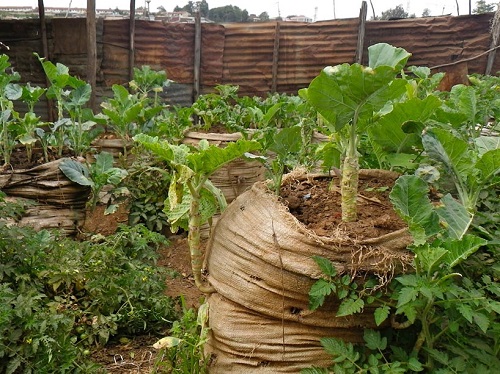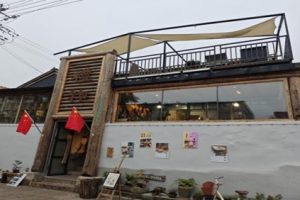
BY GIRMACHEW GASHAW
“…Agriculture is the only source of livelihood for my family though I have no legal license to operate agriculture. I have no formal training in agriculture. I got the skill of farming and the land from my father. We use the products for both household consumption and for sale sometimes. It allows us to eat food that we can’t afford to buy. The expansion of Addis Ababa city brought us the market near to our doors.
There was nothing around some decades ago; but know we are engulfed by newcomer city dwellers. In fact, there is scarcity of land, water and power. Water pollution has become critical problem to our work. The water we are using is so smelly and unpleasant. The river is very polluted by solid and liquid wastes…” so said an individual found in urban agriculture business in the outskirts of Nifas Silk Lafto Sub-city while describing the general situation.
As many researchers agree up on, Africa is still grappling with food insecurity despite its huge potential in agriculture which can enhance the economic growth and development. However, many African countries have using urban agriculture to ensure food security.
Last weekend, prime minster Abiy Ahmed has visited urban agriculture practices that have been carried out in and around Addis Ababa city. After the visit the premier has called on the public to strengthen such a wonderful practice so as to ensure food security throughout the nation.
Indeed, the increasing proportion of urban population in the past decades is also accompanied by the urbanization of poverty. Against this backdrop, many countries start considering urban (and peri-urban) agriculture as a viable urban livelihood strategy.
Urban agriculture complements the conventional (rural) agriculture to enhance national food security, contributes to the social, economic and ecological objectives of urban development, connects consumers directly to farms and thus reduces agricultural trade margins, and serves opportunities to use urban resources efficiently said Amsalu Woldie (PhD), Research Fellow at Ca’ Foscari University of Venice, at the Euro-Mediterranean Center on Climate Change, and at EIEE.
As to him, urban agriculture (UA) has a pivotal role to create sustainable and climate-friendly urban centers as it integrates multiple resources such as land, water, waste and energy. As such, UA (and the whole urban food system in general) has the potential to strengthen national and international efforts to advance the Sustainable Development Goals (SDGs).
Consequently, UA is gaining increasing attention throughout the developing world where both the rates of urbanization, and the number of underprivileged and food insecure inhabitants are high.
According to the study, Ethiopia is undergoing through rapid rates of urbanization (ca. 4.6% annul urban population growth rate), and rising food prices and living costs. As such, UA will have a substantial role in fostering sustainable urban development agenda in the country UA serves a unique opportunity to diversify employment, income and dietary options for urban households, and to recycle and reuse urban wastes thereby contributing to sustainable urban development.
Despite its potential, however, the sector still receives inadequate institutional and policy support. A range of measures to raise urban households’ awareness on waste management and their reuse in homestead gardens are highly needed. Overall, the sector deserves a due place in the sectorial and macroeconomic plans of the country, the study recommended.
Another study conducted jointly by Addis Ababa University and Kotebe Metropolitan University indicated that the socioeconomic development, urban greening, food security enhancement and job creation roles of UA is found to be imperative in Addis Ababa and the surrounding towns.
However, the sector suffers from lack of proper attention by stakeholders, poor implementation, organizational problems, management and supervision. It is one of the most underprivileged sector and almost haphazardly practiced without proper registration and licensing in most areas in the towns. It is poorly benefited from research, extension services, technical skills, input supply and market linkage, according to the study.
The collaboration between different stakeholders working on UA is also found to be poor. Waste processing and recycling is not yet getting proper attention by the municipalities and the society at large in view of its immense contribution in UA, it was said.
Enormous vacant urban towns are still wastelands meant for informal car washes, damping of solid wastes/garbage, junkyard and other unpleasantly organized ‘businesses’. The wastelands could have been turned into productive green spaces through proper implementation of UA which, in turn, could have been sources of fresh foods in addition to its contribution as refreshment/recreation for the residents.
In fact UA could be operated on small vacant areas like homesteads (on-plot), parks, roundabouts, roadsides, riversides and schoolyards. Uniquely, it can also be operated in outdoors, balconies, containers and roof tops. Of the study towns, only Addis Ababa has introduced a policy/strategy for UA.
The Addis Ababa UA policy/strategy has contained fairly vital issues that can be adapted by other towns surrounding the city. These include, but not limited to, issues related to promoting and supporting the development of viable urban and peri-UA, provision of guidelines in the implementation of UA programs, assisting the local authority in the integration of UA in its socioeconomic development systems, and addressing key issues and challenges in the development of UA in Addis Ababa.
The policy/strategy framework has provided a tangible measure for achieving greater visibility of UA within urban planning. The policy sets out a sound framework that promotes UA in an effort to improve food security, income and employment in an environmentally friendly,
Socially inclusive and gender sensitive manner, while reducing environmental degradation and pollution through the sustainable utilization of natural resources and the environment. The policy framework comprises five major elements that can be adapted by other study towns. These are issues related to access to land and water, health and environment, UA services, gender and social issues, and institutional and operational frameworks.
Cognizant of the importance of UA for multiple socioeconomic and environmental factors and in view of the less attention given to it, a few practical policy recommendations can be pointed out to be implemented by municipalities of each town/city.
The Ethiopian Herald March 13/2022





